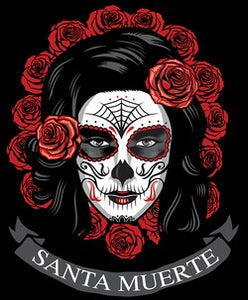The traditional Day of the Dead celebration, November 2 in Mexico, is full of symbols and decorations, such as statues of dressed skulls, skull-like loaves and candies, and the popular "altar of the dead" fear in some that it is a cult of the "Santa Muerte". Is there a link between the two?

The celebration of Mexico's Day of the Dead and the cult of Santa Muerte share deep cultural roots, but they represent distinct expressions of Mexican spirituality. The Day of the Dead, celebrated from October 31 to November 2, is a centuries-old tradition in which families honor their deceased loved ones by creating altars richly decorated with food offerings, flowers and personal objects. This celebration is rooted in the belief that the spirits of the departed return to share moments with the living. The cult of Santa Muerte, on the other hand, although linked to death, is a modern-day adoration of the figure of the Holy Death. Followers of the Santa Muerte see this deity as a powerful protector, invoked for help in various aspects of daily life. Although these practices have much in common, it is essential to recognize their distinctions to better understand the richness and diversity of beliefs in Mexico.
Mexican priest Luis Fernando Valdés, doctor of divinity and chaplain of the Universidad Panamericana, explained that Mexican traditions for the Day of the Dead are far removed from the idolatrous cult of the Santa Muerte, a false devotion that has developed around criminals.
Speaking to ACI Prensa in 2018, Father Valdés explained that the celebrations have their roots in the inculturation born from the Spanish evangelization of Mexican lands in the 16th century. “There was a very beautiful pastoral phenomenon, of a true inculturation of the Gospel. In other words, the Gospel came to life in the everyday popular culture of the people, bringing in its elements and purifying many negative elements from it. local culture ".
The priest indicated that the pre-Columbian cultures of Mexico and Central America already had items such as skulls, food for the deceased and orange flowers called cempasúchil to commemorate "the very complicated phenomenon of death, which is a mystery to human eyes ".
However, after evangelization, "death is no longer a theme of gigantic pain for a loss or a departure to a place of which we do not know what it is, but death has been redeemed by Christ and death indicates resurrection ".
"That is why the skulls, whether candy or chocolate, which are decorated, have an almost festive meaning, for they already in some way herald the resurrection. Death, as the teachings teach us. Christian revelation, does not have the last word ".
The "altar" of the dead
This "dialogue" between pre-Columbian culture and the Catholic faith, underlined Father Valdés, is particularly visible in the altar of the dead.
"The altar of the dead has a very beautiful context, which is that in each Catholic home, there is a part of the house which is a kind of family chapel, which takes up elements of the churches. It is a kind of altarpiece. where there are images of the Virgin, of the Sacred Heart, of Saint Martin, of Saint Jude, and there is a table, with candles, which in a way imitates the altar of a church.
Pre-Columbian cultures such as the Aztecs, he said, believed that the dead "were there, moving around, and that on the day of the dead, their anniversary of the dead, they could go to the house where they had lived, to eat the food they loved ".
"A line of flowers was placed indicating the way from the door to the table where their food was placed, so that the deceased could come and eat," he explained.
"It became Christianized and the flowers were placed as part of the altar, the family chapel, and the bread for the dead, the food, etc. were placed there, but with a new meaning, a festive meaning. , family, and not with the meaning that the deceased has just appeared ".
"They also put pictures of deceased relatives, which is a beautiful Mexican tradition, honoring deceased relatives, always remembering them."
The risk of syncretism and the cult of Santa Muerte
However, Father Valdés warned of the "risk" of syncretism and a misunderstood cult of the dead.
"Any inculturation of the Gospel always involves a risk of syncretism, of arbitrary fusion of ideologies and beliefs, of mixing".
"In Mexico, we have a very big problem with the false religiosity of the cult of Santa Muerte, a cult which is not Catholic but which incorporates Catholic elements," he declared.
The priest explained that "this superstition is closely linked to the criminals, who made it an element to protect themselves in their misdeeds and shootings. Remeda is a false imitation of Catholic symbols."
Catholics, he said, "pray for a holy death, that is, to die in the grace of God. But they take holy death as if it were a personage, a living entity, a person, that is why it is a skull with clothes, as if it were a deity ".
"It's an idolatrous, superstitious question, because you take death as if it were a character, who decides when you live, when you die, and should be asked not to carry me away again. This is totally opposed to faith, which teaches us that the only one who holds our life in his hands is God, who is a Good Father ”.
For Father Valdés, to overcome these syncretisms and these false cults, a "better catechesis" is important.
“There has always been a risk of syncretism. And so, in places where there is better catechesis, better evangelism, these meanings of the altar of the dead are very well understood, not as a matter of superstition but like something that has been read in the light of the gospel, ”he said.

